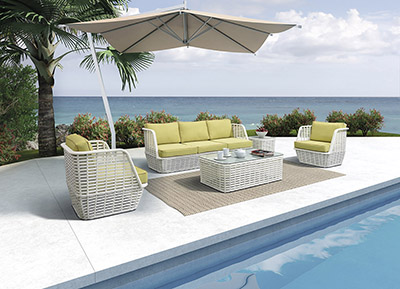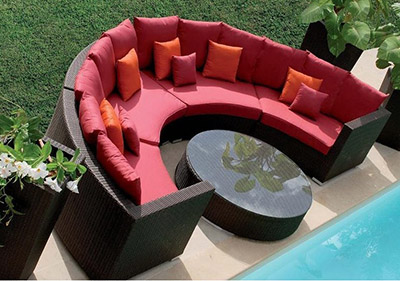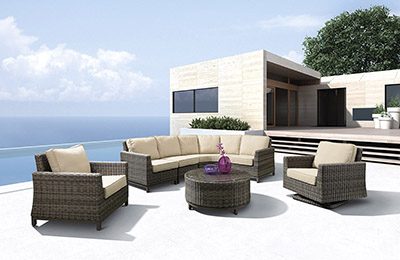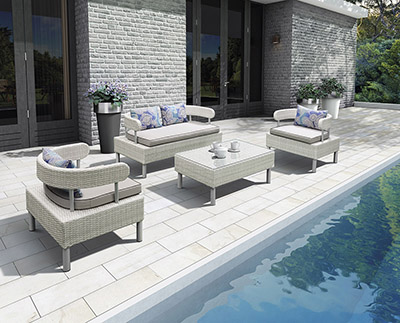A light color and object color
1. Light and color
Light and color coexist, only light is colored. Color feels inseparable from light.
(1) Light and visible spectrum. Light is a kind of electromagnetic wave in physics. Electromagnetic waves from wavelengths of 0.39 to 0.77 micron can cause people's visual perception of color. This range is called the visible spectrum. Wavelengths greater than 0.77 microns are called infrared rays, and wavelengths less than 0.39 are called ultraviolet rays.
(2) The spread of light. Light travels in straight lines in the form of undulations, with both wavelength and amplitude. Different wavelengths produce hue differences. Different magnitudes of amplitude produce differences in lightness and darkness of the same hue. Light is transmitted in direct, reflective, transmissive, diffuse, refractive and other forms. Directly into the human eye when the light is direct, the light source is the light source. When the light source illuminates the object, the light is reflected from the surface of the object. What the human eye feels is the surface color of the object. When the light is irradiated, in the case of a transparent object such as glass, the human eye sees through the object through the color. In the process of propagation, when the object is interfered with by light, diffusion occurs, which has a certain influence on the surface color of the object. If there is a change in direction when passing through different objects, this is called refraction. The color of light reflected by the human eye is the same as the color of the object.
2. Object color
There are many kinds of objects in the natural world, and there are thousands of variations. Although most of them don't emit light, they all have the property of selectively absorbing, reflecting, and transmitting colored light. Of course, it is not possible for any object to absorb or reflect all of the colored light, and therefore, there is virtually no absolute black or white.
In the common black, white and gray object colors, the reflectance of white is 64%-92.3%; the reflectance of gray is 10%-64%; the absorption rate of black is more than 90%.
The ability of an object to absorb, reflect, or transmit colored light is greatly affected by the texture of the surface of the object. Smooth, flat, delicate objects have strong reflections of colored light, such as mirrors, polished stone surfaces, and silk fabrics. Rough surface, uneven, loose objects, easy to make light diffusion phenomenon, so the reflection of the light is weak, such as frosted glass, wool, sponge and so on.
However, the absorption and reflection ability of the object to the color light is fixed, but the surface color of the object changes with the color of the light source, and sometimes even loses its original hue feeling. The so-called "intrinsic color" of objects is actually just people's habits under normal light. For example, under the twinkling, intense neon light, the colors of all buildings and characters almost lost their original colors and became unpredictable.
In addition, the intensity and angle of illumination also affect the color of the object.
Second, color stereo and color system
Color stereo
The three-dimensional color is based on the hue, lightness and purity of the color, and uses a three-dimensional space to form a three-dimensional model similar to a sphere using the method of rotating rectangular coordinates. Its structure has been compared to the shape of the globe. The north pole is white, the south pole is black, the axis connecting the north and south poles through the center is the lightness axis, the northern hemisphere is the light color system, and the northern and southern hemispheres are dark colors. The position of the hue circle is on the equator line, and the point of gravity is a heavy straight line from the center axis to the purity standard. The closer to the center, the lower the purity, and the center of the ball is a positive gray.
There are many kinds of three-dimensional color, mainly in the United States, the color of the three-dimensional color, Germany Ostwald color three-dimensional, Japan color research three-dimensional and so on.
2. Monsel color system
Third, the three elements of color and color contrast
<A>. The basic type of color contrast ratio
After two or more colors are combined, the color contrast effect formed due to the difference in hue is called the color contrast ratio. It is a fundamental aspect of color contrast. The degree of contrast depends on the distance (angle) between the hue rings on the hue circle. The smaller the distance (angle), the stronger the contrast, and vice versa.
1. Zero degree comparison
(1) Achromatic contrasts Achromatic contrasts Although there is no hue, their combination is useful in practical applications. Such as black and white, black and gray, medium gray and light gray, or black and white and gray, black and dark gray and light gray and so on. The contrast effect feels generous, solemn, elegant and modern, but it also tends to produce a monotonous sense of monotony.
(2) Achromatic and chromatic pairs such as black and red, gray and purple, or black and white and yellow, white and gray and blue. The contrast effect feels generous and lively. When the area without color is large, it tends to be elegant and dignified. When there is a large area, the liveliness is strengthened.
(3) The contrast of the same kind of color to the different brightness or different purity of one kind of hue, commonly called the sister color combination. Such as blue and light blue (blue + white) color contrast, orange and coffee (orange + gray) or green and pink green (green + white) and dark green (green + black) color contrast. The contrast effect feels unified, quiet, elegant, subtle, and stable, but it is also prone to monotonous and dull problems.
(4) Compared with the same color, achromatic colors such as white and dark blue and light blue, black and orange and brown are compared, and the effect combines the advantages of types (2) and (3). Feeling both a certain level and generous, lively and stable.
2. Concise contrast
(1) Contrary to adjacent color Two-to-three color contrast on a hue ring, the hue distance is approximately 30 degrees, which is a weak contrast type. Such as red orange and orange and yellow orange contrast. The effect feels soft, harmonious, elegant and quiet, but it also feels monotonous, ambiguous, boring, and powerless, and the brightness difference must be adjusted to enhance the effect.
(2) Relative color contrast ratio of similar color is about 60 degrees, which is a weaker contrast type, such as the contrast between red and yellow orange. The effect is more plentiful and lively, but it still has the feeling of unity, elegance and harmony.
(3) The relative color contrast ratio is approximately 90 degrees relative to the distance. It is a type of medium contrast, such as the contrast between yellow and green. The effect is bright, lively, full, exciting, and interesting. The contrast has considerable strength. Does not miss the sense of harmony.
3. Strong contrast
(1) Contrast color Relative color contrast distance is about 120 degrees, which is a strong contrast type, such as the contrast between yellow-green and red-purple. The effect is strong, eye-catching, powerful, lively, and rich, but it is not easy to unify and feel cluttered, stimulating, and causing visual fatigue. Generally need to use a variety of blending means to improve the contrast effect.
(2) Complementary color The contrast ratio is 180 degrees, which is an extreme contrast type, such as red and blue-green, yellow and blue-purple contrast. The effect is strong, dazzling, loud, and extremely powerful. However, if handled improperly, it can easily produce naive, primitive, vulgar, unsteady, and uncoordinated bad feelings.
(to be continued)



